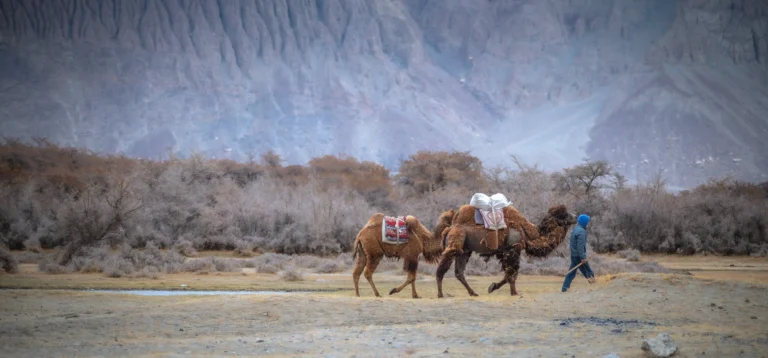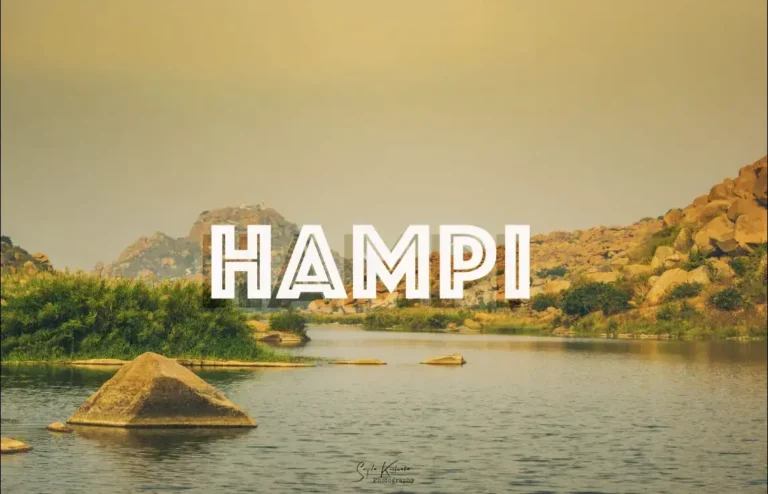Continuing our Ladakh series Blog, we are ready to share another amazing experience from this beautiful village that is tucked away in the northernmost region of India. While preparing our Ladakh itinerary, we came to know about the charm of this place from the whispers of fellow travelers. Welcome to Turtuk Village, Ladakh’s most peaceful and untouched village haven. Here, time slows down and nature sings in silence.

Turtuk Village, located in the Nubra Valley of Ladakh, is one of the most off-beat places that we covered in our Ladakh trip. It is also the last village in India as it is just 12 km away from the Line of Control (LoC) with Pakistan. Occupied by the last of the few remaining Balti tribes in India, it is a unique blend of natural beauty, cultural richness, and history. Unlike the other popular destinations in Ladakh, Turtuk Village is comparatively unexplored. It provides a genuine taste of Baltistani culture and a peaceful haven in the middle of nature.
How to Reach Turtuk Village
Reaching Turtuk is an adventure in itself. Located approximately 205 km from Leh, the capital of Ladakh, the road journey takes around 7-9 hours under favorable weather conditions. The drive is filled with winding roads and some of the most stunning views of the great Indian Himalayas.
The route passes through the iconic Khardung La Pass, one of the world’s highest motorable roads that is approximately 18000 feet above sea level. As we ascend, the scenery changes to the stunning landscapes of Nubra Valley with barren mountains and snow-covered peaks.

Knowing that a direct journey to Turtuk village will be long and tiring, we planned our stay in Hunder, in Nubra Valley, a beautiful village popularly known as the land of the cold desert with its white sand dunes and double-humped Bactrian camels. As Turtuk is approximately 85km from Hunder, we halted in Hunder and resumed our journey to Turtuk Village the next morning after a refreshing night’s stay.
Similar Read: Enigmatic Beauty of Hunder: Cold Deset ,White dunes a
A Glimpse Into Turtuk’s History
Post Indo-Pak war in 1971, Turtuk was a part of Baltistan, which was under Pakistan’s control. The Indian Army reclaimed Turtuk along with a few other villages during the Kargil War fought in the year 1971. Thus, Turtuk displays a rare insight into the regions that share cultural and linguistic similarities with Gilgit-Baltistan. Many residents of Turtuk are Balti Muslims, and their traditions, architecture, and language are a fascinating contrast to the rest of Ladakh.
Fun Fact: Do you know?
Post Indo-Pak war, the whole region was militarized and was not opened to tourists until the year 2010. Thus compared to the rest of the tourist locations in Ladakh, Turtuk Village is one of the most recent additions to India’s Travel map
The Beauty of Turtuk Village
Turtuk’s landscape displayed a striking contrast when compared with the barren look of the moonland of Ladakh. With the Shyok River flowing alongside the Village, it is blessed with fertile land. One can witness huge Apricot Orchards, Walnut trees, and buckwheat fields, with the cool mountain air filled with the fragrance of blooming flowers, while roaming through the narrow lanes of this village.
The village is divided into three parts: Youl, Farol, and Chutang, each with its charm. Traditional stone houses and wooden bridges are another attraction in this village.
Top Things to Do in Turtuk
short info:
1. Explore the Village on Foot
2. Visit the Local Museum
3. Taste the Local Cuisine
4. Attend a Cultural Program (if available)
5. Hike to Waterfalls and Viewpoints
The best way to explore Turtuk Village is to wander through the narrow and winding alleys on foot. As your feet guide you through the stone houses with wooden fences and wide buckwheat farms surrounded by the Himalayas, you will see children playing far by the stream, locals exchanging stories with the tourists, and artisans quietly working on age-old crafts.
A short walk uphill will take you to the Turtuk Heritage Museum, curated and maintained by the descendants of the Yabgo Dynasty. Here, the past comes alive through a fascinating collection of traditional clothing, old utensils, and the age-old architecture of the heritage home where people lived along with livestock. It’s a small but meaningful space that tells stories of Turtuk’s heritage and its unique place in Ladakh’s history.

You can also experience local cuisines like Khambir, the local warm and crusty bread, buckwheat pancakes served with tangy chutneys, Chutagi, a comforting pasta soup, and of course, apricot-based dishes at small local restaurants present here. If not local cuisines, “The pahado walli maggi” (Instant noodles) is available in almost all the restaurants. Don’t forget to try their homemade apricot jam and sun-dried fruits, which also make for great souvenirs.
You can also experience Balti folk dance, typically performed during festivals, ceremonies, and celebrations, including marriages and harvest celebrations.
For those who crave nature and a bit of adventure, short hikes (trekking effort level: medium; not easy yet not so tiring) from the village lead to gentle waterfalls and breathtaking viewpoints—ideal for photographers and nature lovers alike.
Where to Stay in Turtuk
While there are no luxury hotels in Turtuk, the village offers a range of homestays and eco-friendly guesthouses that provide clean, comfortable accommodations along with home-cooked meals.
Recommended stays include:
- Balti Heritage Home Stay
- Turtuk Holiday Resort
- North Camp Turtuk
Travel Tip:
Although staying homestays in the village can be a bit adventurous, with limitations like regular power cuts during the night, low cell reception, and no availability of emergency medical facilities. It is fun if you go prepared with extra batteries for cameras, a power bank for cellphones (preferably prepaid cellphones), emergency lights, and a first aid kit.
Best Time to Visit Turtuk
The ideal time to visit Turtuk Village is between May and September, when the weather is pleasant and the roads are open. During this time, the orchards are in bloom, and the village is at its most vibrant. Winters in Turtuk are harsh, and the village remains largely inaccessible due to snow.
Essential Travel Tips
- Carry Cash: There are no ATMs in Turtuk. Ensure you have enough cash for your stay.
- Connectivity: The Mobile network is limited. BSNL has the best coverage. Prefer Postpaid SIM cards
- Respect Local Culture: Dress modestly and seek permission before photographing locals.
- Stay Hydrated and Acclimatized: Due to the high altitude, drink plenty of water and take it easy for the first day.
- First Aid Kit: Carry a First Aid kit with all the prescribed medications by the physicians. Must carry portable oxygen can and altitude sickness meds.
- Eco-conscious Travel: Help preserve the village’s pristine environment by minimizing plastic use and disposing of waste responsibly.
Why Turtuk Should Be on Your Travel Bucket List
Turtuk is more than just a picturesque village. Walking down the alleys of Turtuk village feels like living in those 4K TV ads. The view and the environment there are so fresh that the mind automatically goes into a meditative state, and you can feel real inner peace. Situated far from the hustle of crowded cities, Tutrtuk Village stands as a cultural bridge between India and Central Asia, a living museum of Baltistan’s traditions, and a haven for those seeking tranquility and authenticity. Unlike the more commercialized destinations in Ladakh, Turtuk allows you to slow down and connect with nature and people most profoundly.
Whether you’re an adventure enthusiast, a cultural explorer, or a peace seeker, Turtuk Village in Ladakh promises an unforgettable journey into a world untouched by time.
So, when you plan your next trip to Ladakh, take the road less traveled — and let Turtuk leave you breathless.
Where to buy your photos?
You can buy my photos for print and commercial purposes by visiting the websites below.
Would love to know your thoughts, do leave us a comment
Follow Me on Instagram, Facebook & Pinterest.
















